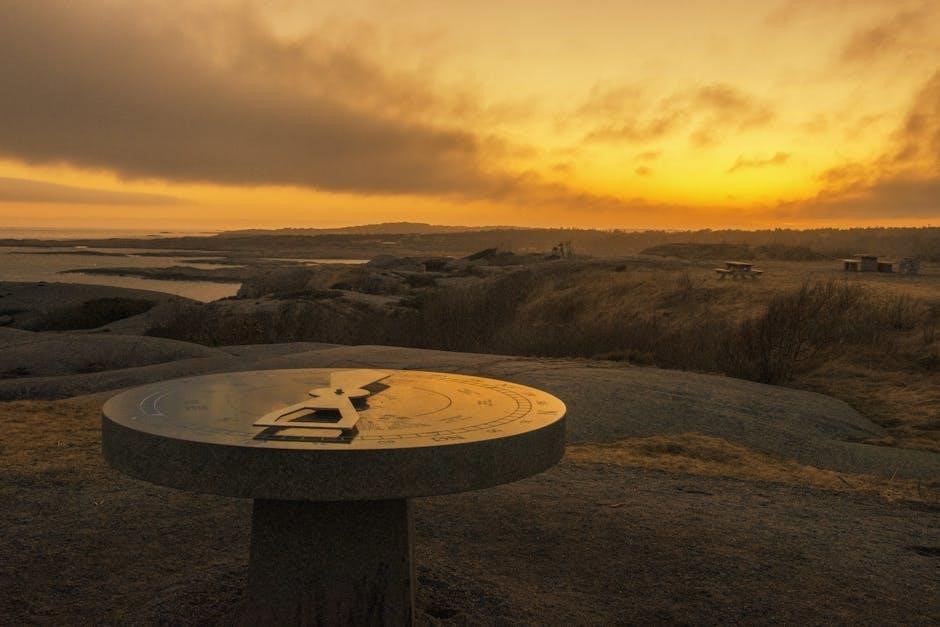Star Trek: Voyager, created by Rick Berman, Michael Piller, and Jeri Taylor, aired on UPN from 1995 to 2001. It follows the USS Voyager, stranded 75,000 light-years from Earth in the Delta Quadrant. Led by Captain Kathryn Janeway, the crew’s journey home becomes the central narrative, exploring themes of survival, unity, and resilience in the face of overwhelming odds.

Season 1 Episodes
Season 1 of Star Trek: Voyager premiered on January 16, 1995, and consisted of 15 episodes. It introduced the USS Voyager’s stranded crew in the Delta Quadrant, with episodes like “Caretaker,” “Parallax,” and “Eye of the Needle” setting the series’ tone and premise.
Notable Episodes
Season 1 of Star Trek: Voyager introduced the crew’s struggle to adapt to life stranded in the Delta Quadrant. Among its 15 episodes, several stand out for their compelling storytelling and character development.
- Caretaker: The pilot episode that sets the series in motion, introducing the crew’s predicament and the alien encounters that define their journey.
- Time and Again: A thought-provoking episode where Captain Janeway and Tom Paris witness a planet’s destruction, exploring themes of time travel and ethical dilemmas.
- Eye of the Needle: A pivotal episode where the crew discovers a wormhole that could lead them home, offering hope but also highlighting the challenges of their situation.
- Faces: A gripping story focusing on B’Elanna Torres, where she is split into her human and Klingon halves, showcasing the complexity of her character.
- Phage: This episode introduces the Vidiians, a recurring alien species, and explores the moral implications of their desperate survival methods.
These episodes not only establish the series’ tone but also lay the groundwork for the crew’s ongoing struggle to survive and return home.
Multi-Part Episodes
Season 1 of Star Trek: Voyager features several multi-part episodes that enhance the storytelling and deepen the audience’s engagement. These episodes are designed to maintain suspense and provide a more intricate narrative structure.
- Caretaker (Parts I & II): The two-part pilot episode that introduces the series’ premise, detailing the crew’s initial encounter with the Caretaker and their arrival in the Delta Quadrant.
- Basics (Parts I & II): A gripping two-parter where the crew faces off against the Kazon, leading to a dramatic takeover of the ship and a desperate fight to reclaim it.
- Futures End (Parts I & II): A time-travel story that sends the crew to the 20th century, where they must prevent a catastrophic future from unfolding while navigating the challenges of a bygone era.
- Scorpion (Parts I & II): This two-part episode introduces the Borg and Seven of Nine, marking a significant shift in the series’ dynamics and setting the stage for future seasons.
These multi-part episodes not only showcase the series’ ability to craft compelling, interconnected stories but also highlight the crew’s resilience and ingenuity in the face of overwhelming adversity.

Season 2 Episodes
Season 2 of Star Trek: Voyager features 26 episodes, continuing the crew’s journey through the Delta Quadrant. Notable episodes include Equinox, Part II, Survival Instinct, and Barge of the Dead, showcasing the crew’s struggles and discoveries.
- Equinox, Part II
- Survival Instinct
- Barge of the Dead
Star Trek: Voyager features several standout episodes that captivated audiences and explored complex themes. Among these, Caretaker serves as the pilot, introducing the crew’s predicament in the Delta Quadrant. Basics concludes the first season with a dramatic cliffhanger, while Scorpion initiates a two-part storyline involving the Borg. The two-part episode Year of Hell delves into alternate timelines, showcasing the crew’s resilience. Dark Frontier and Equinox also stand out for their multi-part narratives and intense character development. Additionally, Threshold offers a unique, albeit controversial, take on evolution, and Latent Image explores ethical dilemmas in medical technology. These episodes not only highlight the series’ ability to blend action with emotional depth but also contribute to its enduring legacy in the Star Trek universe.
- Caretaker
- Basics
- Scorpion
- Year of Hell
- Dark Frontier
- Equinox
- Threshold
- Latent Image
Star Trek: Voyager masterfully uses multi-part episodes to explore intricate storylines and character dynamics. These episodes often serve as pivotal moments in the series, driving the overall narrative forward. The two-part pilot, Caretaker, sets the stage for the crew’s journey in the Delta Quadrant. Basics concludes Season 1 with a thrilling cliffhanger, while Scorpion kicks off Season 4 with a dramatic encounter with the Borg. Year of Hell is a gripping two-part episode that delves into alternate timelines and the consequences of Annorax’s actions. Another standout is Dark Frontier, which explores Seven of Nine’s past and her connection to the Borg. Finally, Equinox presents a moral dilemma as Captain Ransom’s actions challenge Captain Janeway’s principles. These multi-part episodes not only showcase the series’ ability to craft compelling, interconnected stories but also highlight the crew’s resilience and unity in the face of overwhelming challenges.
- Caretaker
- Basics
- Scorpion
- Year of Hell
- Dark Frontier
- Equinox

Season 3 Episodes
Season 3 of Star Trek: Voyager consists of 26 episodes, continuing the crew’s journey through the Delta Quadrant. Notable episodes include Basics, Part II, Flash’s Pen, and Futures End, which explore diverse challenges and character growth.
- Basics, Part II
- Flash’s Pen
- Futures End
Several episodes from Star Trek: Voyager stand out for their compelling storytelling and character development. Caretaker, the pilot, introduces the series’ premise, while Scorpion marks a turning point with the Borg alliance. Year of Hell explores alternate timelines, and Dark Frontier delves into Seven of Nine’s backstory. These episodes not only advance the plot but also deepen the audience’s connection to the crew.
- Caretaker ― The pilot episode that sets the stage for Voyager’s journey.
- Scorpion ⎯ A two-part episode featuring a historic alliance with the Borg.
- Year of Hell ― A gripping tale of time travel and alternate realities.
- Dark Frontier ⎯ A powerful exploration of Seven of Nine’s past.
These episodes exemplify the series’ ability to blend action, drama, and introspection, making them fan favorites and critical highlights of the show.
Star Trek: Voyager features several multi-part episodes that showcase complex storytelling and character development. These episodes often span two or more parts, allowing for deeper exploration of plotlines and emotional arcs.
- Caretaker ⎯ The pilot episode that introduces Voyager’s journey.
- Basics ― A two-part story where the crew faces the Kazon threat.
- Futures End ⎯ A time-travel narrative split into two parts.
- Scorpion ⎯ A pivotal two-parter featuring the Borg and Seven of Nine’s introduction.
- Year of Hell ― A two-part episode exploring alternate timelines.
- The Killing Game ⎯ A two-part story delving into simulations and reality.
- Dark Frontier ― A multi-part episode focusing on Seven of Nine’s backstory.
- Equinox ⎯ A two-part episode introducing the USS Equinox.
These multi-part episodes enhance the series’ narrative depth and provide memorable moments that define Voyager’s legacy.

Themes and Story Arcs
Star Trek: Voyager explores rich themes and intricate story arcs, setting it apart in the Star Trek franchise. The central theme of survival and resilience is evident as the crew navigates the treacherous Delta Quadrant, striving to return to Earth.
- Homecoming: The overarching quest to return home drives the series, with episodes like Caretaker and Hope and Fear highlighting this theme.
- Unity in Diversity: The merging of Starfleet and Maquis crews exemplifies unity amidst adversity, explored in episodes like Parallax and State of Flux.
- Moral Dilemmas: The crew often faces tough ethical choices, as seen in Latent Image and Equinox, questioning the nature of right and wrong.
- Identity and Belonging: Characters like Seven of Nine and the Doctor undergo significant development, exploring themes of self-discovery and belonging.
These themes are woven into multi-episode arcs, such as the Borg encounters and the Vidiians’ organ harvesting, adding depth and continuity to the series.

Character Development
Character development in Star Trek: Voyager is a cornerstone of its narrative, with the crew evolving significantly over seven seasons. Captain Kathryn Janeway, portrayed by Kate Mulgrew, embodies leadership and sacrifice, grappling with the moral complexities of commanding a stranded ship.
- Seven of Nine: Introduced in later seasons, Seven’s journey from a Borg drone to an individual highlights themes of identity and humanity, making her one of the series’ most compelling characters.
- The Doctor: The Emergency Medical Hologram evolves from a program to a sentient being, exploring rights, emotions, and ethics in episodes like Latent Image.
- Tom Paris and B’Elanna Torres: Their relationship matures, with Tom overcoming his rebellious past and B’Elanna embracing her Klingon heritage, adding depth to their arcs.
Throughout the series, the crew confronts personal struggles and growth, enriching the storytelling and connecting viewers to their journeys.

Critical and Fan Reception
Star Trek: Voyager received a mixed response from critics and fans during its run. While praised for its unique premise—a Starfleet crew stranded in the Delta Quadrant—it faced criticism for inconsistent storytelling and underutilized characters. Fans appreciated the show’s exploration of survival themes and its strong female lead, Captain Kathryn Janeway.
- Critical Reception: Critics noted the series’ potential but often cited uneven writing and missed opportunities to delve deeper into its premise. Episodes like Latent Image and Year of Hell were praised for their complexity, while others, like Threshold, were criticized for inconsistent logic.
- Fan Reception: Fans embraced the show’s unique elements, such as the integration of Borg character Seven of Nine, who became a fan favorite. The Doctor’s development from a hologram to a sentient being also resonated with audiences.
Despite its flaws, Voyager maintained a loyal fan base and is remembered fondly for its ambitious storytelling and memorable characters. Its legacy endures as a significant chapter in the Star Trek franchise.
Legacy of Voyager
Star Trek: Voyager left an indelible mark on the franchise and science fiction television. As the first Star Trek series to feature a female captain, Kathryn Janeway, it broke ground in representation, inspiring future female-led narratives. The show’s premise of a crew stranded in the Delta Quadrant allowed for unique storytelling, blending survival themes with exploration.
- Cultural Impact: Voyager introduced iconic characters like Seven of Nine, whose integration into the crew redefined the Borg’s role in the franchise. The show’s exploration of identity, morality, and resilience resonated deeply with audiences.
- Influence on the Franchise: Voyager paved the way for future Star Trek series to experiment with serialized storytelling and complex character arcs. Its success also influenced spin-offs like Star Trek: Picard, which revisited legacy characters.
- Fandom and Relevance: Despite ending in 2001, Voyager remains popular in reruns and fan discussions; Its themes of hope and unity continue to attract new audiences, solidifying its place in Star Trek history.
Voyager’s legacy is a testament to its bold storytelling and memorable characters, ensuring its enduring relevance in the Star Trek universe.
